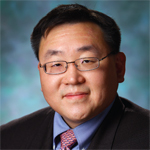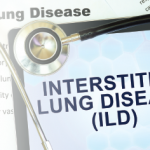First, Do No Harm
I have been a practicing rheumatologist long enough to know that I have deliberately harmed my patients. Hemorrhagic cystitis from cyclophosphamide, cytokine storm from rituximab, hypersensitivity pneumonitis from infliximab. I have also borne witness to the sins of those who came before me, particularly in the form of secondary malignancies that arose as the result of therapies started before I was a rheumatologist. The fact that these side effects are rare is cold comfort to the patient who falls in the tail of the bell-shaped curve.
When I am treating a patient with life-threatening, systemic vasculitis, I still sleep easy at night knowing the risk of a rare side effect is better than losing their kidney function, for example. When the potential for benefit is small, however, the calculus becomes more complicated.
The Scleroderma Lung Study I demonstrated that a year of treatment with oral cyclophosphamide led to a 2.5% improvement in forced vital capacity, when compared with placebo.8 The long-term follow-up from this study indicates this benefit is no longer detectable a year after the cyclophosphamide has been stopped.9 The Scleroderma Lung Study II indicates that mycophenolate is as good as cyclophosphamide, but when you look at the numbers, it seems to be damning with faint praise.10
One could try to invoke the rheumatoid arthritis model and argue we should be treating patients earlier, when their disease is more malleable. That said, the therapeutics of rheumatoid arthritis are much more appealing; if biologics led to only a 2.5% improvement in the ACR20 score, I doubt we would be spending much time discussing the treatment of very early rheumatoid arthritis.
For rheumatoid arthritis, the potential of treating preclinical rheumatoid arthritis seems promising. For other diseases, it is difficult to be certain. Some patients with other preclinical rheumatic diseases probably could benefit from being treated much earlier, but before we are ready to move in that direction, much work remains to be done.
As for my fellow, when he has my job and I’m playing shuffleboard in Boca, I wonder what he will tell his fellow to do with a patient in the same scenario. I would guess that whatever he says, he will be a lot less certain saying it. As Yogi Berra once said, “It’s tough to make predictions. Especially about the future.” Come to think of it, maybe Yogi Berra was a rheumatologist, too.
 Philip Seo, MD, MHS, is an associate professor of medicine at the Johns Hopkins University School of Medicine, Baltimore. He is director of both the Johns Hopkins Vasculitis Center and the Johns Hopkins Rheumatology Fellowship Program.
Philip Seo, MD, MHS, is an associate professor of medicine at the Johns Hopkins University School of Medicine, Baltimore. He is director of both the Johns Hopkins Vasculitis Center and the Johns Hopkins Rheumatology Fellowship Program.



